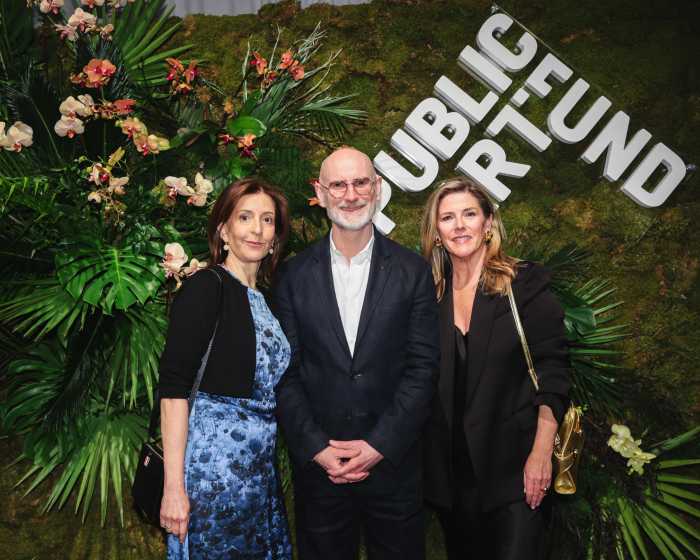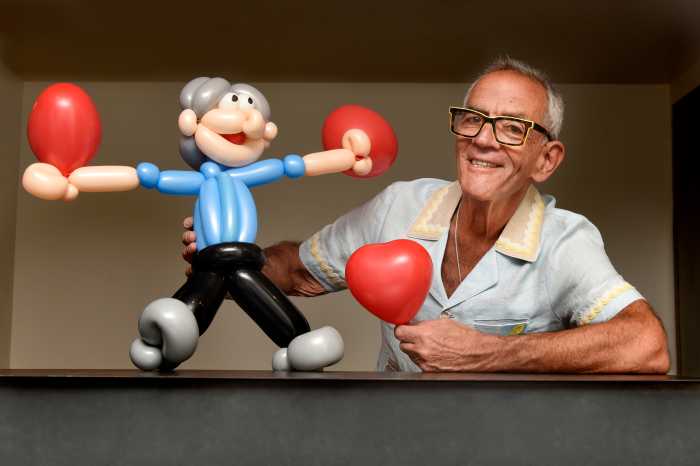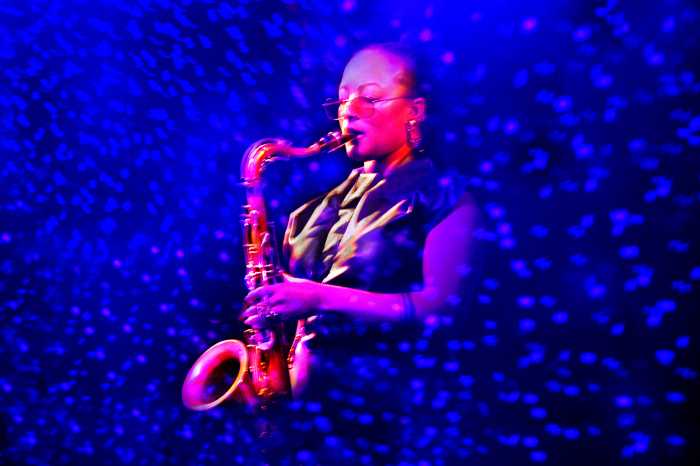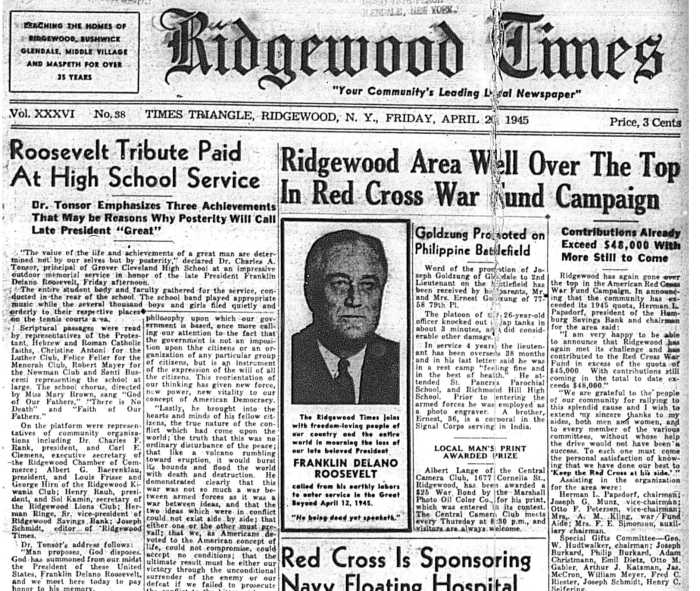By Anindita Dasgupta
Parents at P.S. 3 and P.S. 41 in Greenwich Village are sending their children to some of the best specialized schools in the area. This year, some of the more popular middle schools were Clinton School for Writers and Artists, New York City Lab School for Collaborative Learning, Salk School of Science, and Simon Baruch Middle School.
Clinton School
The administration at Clinton School for Writers and Artists strives to create a nurturing environment for their students. P.T.A. President Tamara Rowe said she wanted a school with a strong arts program, but also wanted a school that was small enough that parents, teachers and students would build strong relationships.
Kate Shore, whose daughter graduated last year and whose son started at Clinton this fall, said, “It’s the kind of school where you say, ‘Hi, it’s Sarah Shore’s mom,’ and they say, ‘Oh, Hi Kate!’ ” She added that her daughter immediately felt comfortable at Clinton. “She walked in, sat down and said it felt like home,” Shore said.
Rowe said that the community feeling fostered in the school led to strong social skills and relations between students. She said that the school asked students to work together on group projects across the disciplines.
“Working on projects with other kids, not just your friends, forces them to learn to negotiate and compromise,” Rowe said. “You learn to be yourself and keep your vision in mind but incorporate the ideas of other people as well.”
She added that the school’s focus on the fine arts, drama and even ballroom dancing helps students develop a great deal of self-confidence and poise.
Despite the small size of the school, Rowe said that Clinton’s population is still diverse.
“It looks like New York City,” she said.
Clinton draws students from all over the district, said parent coordinator, Cindy O’Neil. Besides the school’s warm environment, the school is known for its heavy arts curriculum, Rowe said.
“Most of the kids who come here, really want to come here,” she added. “They show a real interest in the arts.” Clinton, located on the fifth floor of P.S. 11 on W. 21st St., works with a number of organizations in the community, such as Center for Arts Education, Young Playwrights and the Museum of Modern Art, to offer a variety of arts opportunities to Clinton students.
The school is also proud of its eighth-grade art projects, which students present in a festival in June after five months of hard work. Each student works with a mentor — either a teacher, parent or professional from the community — to identify an area of interest in either visual, performance or writing arts. The finished products amaze the community, said parent coordinator O’Neil. In the past, students have compared Chinese and American violin techniques, looked at various cultures through cookbooks of different nations, done creative writing pieces and short films.
“The final projects vary in terms of what people do,” Rowe said. “But the experience is just as meaningful to every one of the kids.”
O’Neil said their curriculum is filled with a great deal of writing as well.
“We put a lot of emphasis on the publishing process,” she said. She explained that students learn to write, edit and rewrite on a regular basis.
“The arts are such a great vehicle for teaching,” O’Neil added. “Every kid has a different spin on how they view things.”
However, O’Neil maintained that the school’s math and science programs are still strong. While students receive three full art periods a week, alternating in visual and performing arts and writing, they also receive two 60-minute periods of math instruction per week. O’Neil described the science curriculum as project based as well. For example, she recalled a project where students designed their own amusement rides, while learning about the science and math required to make the rides function.
A high percentage of Clinton students are accepted to their first-choice high school, said O’Neil. Rowe said she feels her daughter is well prepared for high school.
“She loves learning and feels capable of challenges, meeting teachers’ expectations,” she said. “She’ll be ready.”
N.Y.C. Lab School
The New York City Lab School for Collaborative Learning will see some changes this year as the school’s founding co-principal are leaving. The Chelsea school is known for its high academic and extracurricular standards, built on a curriculum of collaborative learning. As part of the collaborative studies, students work on group projects, emphasizing that students can learn from each other.
With two sons at Lab this year, Marcella Silverman is not too concerned with the change in administration.
“I imagine that we will continue the long tradition of the real cooperative work that goes on here,” she said, adding that the teachers across all subjects work together to develop common themes across subjects for their students.
Silverman also said she likes the diversity of the student population. On its Web site, the school describes its teaching philosophy: In addition to academic rigor, compassion and collaboration, the school values diversity and pluralism, to offer a learning environment where students learn from individual differences and perspectives as well as their textbooks. The school is also recognized for its creative teachers
“I like my kids to be exposed to life outside themselves,” Silverman said. She is part of a strong parents association at the school, which sends out monthly newsletters called, “The Lab Report.” She said another attractive quality of the school is how strong parent involvement is.
“This school is extraordinary as it is because of a combination of paid professionals who work there, but also because of the parents,” she said. Silverman added that the parents and teachers work together to offer students a number of after-school activities.
Silverman added that just like other public schools, Lab suffers from having too many students and not enough teachers. Lab averages around 30 students in a class, leaving too many assignments for the teachers to correct.
“How do you effectively review and critique that many pages? There are only so many hours in a day,” she said.
Salk School of Science
In 1995, Dr. Jonas Salk, developer of the first polio vaccine, created the Salk School of Science on E. 20th St. With New York University’s School of Medicine, the school offers roughly 230 middle school students a chance to explore science in depth with hands on activities and presentations by science professionals in the community.
Patti Burr, the school’s parent coordinator, said that N.Y.U.’s School of Medicine is very involved with Salk, as doctors, professors and even second- or third-year medical students often work with Salk students. Mentors help students with tutoring needs, while professors and doctors rotate between grade levels, offering various presentations with stimulating visuals, such as an anatomy lecture where the doctor provided a real heart for students to examine.
Despite the rigor of the school, Salk does not gives hours upon hours of homework to its students. Burr said most Salk students receive one to two hours of homework per night, adding that while the students are highly motivated, “We believe in not a lot of homework. We would rather tax their brains during the day.”
While the school specializes in science, Burr maintained that Salk’s humanities classes are strong as well. Students take courses in humanities, math, technology, physical education, and an additional two science courses. Electives like art and advisory periods are also available for students, she said.
Simon Baruch School
Between its Latin program, solid traditional academics, various electives, and active parent participation, Simon Baruch on E. 21st St. has a little bit of everything.
On the first day of school, members of Baruch’s Parent Teacher Association welcomed parents and students as they entered the building. P.T.A. officers handed out letters with their plans for the upcoming year to new parents, hoping to rope in formerly active elementary school parents. P.T.A. Treasurer Jeanne Sondheim said they hoped to incorporate teachers into the P.T.A. more this year, by drawing more of their input and suggestions. She explained that the P.T.A. works on a number of fundraisers throughout the year, including the Scholastic Book Fairs, which take place in the winter and spring.
Baruch students come from all parts of the city. Sondheim said that a lot of Baruch’s students are from the East Village. However, Monique Blakes, one of the P.T.A. co-presidents, and her eighth-grade son, live in Brooklyn. After visiting a number of middle schools, she felt Baruch was the best option for her son. She lauded the many electives offered to students at the time, including ceramics, music, art, drama and computer. Like Village parents, she values the diversity among their student population.
Sondheim agreed, saying that the diversity of the students’ backgrounds led to strong relationships between them. She explained that since the school reflects New York City, the students learn to deal with the diverse populations they would deal with on a regular basis, thus enforcing positive social skills.
She added that another reason she picked Baruch for her seventh-grade son was that the building offers ample space for students to learn.
“It didn’t feel cramped,” she said.
“The teachers are very, very dedicated, knowledgeable and experienced,” she added. “They all seem to have the common interest in giving kids the best academic program.”


































